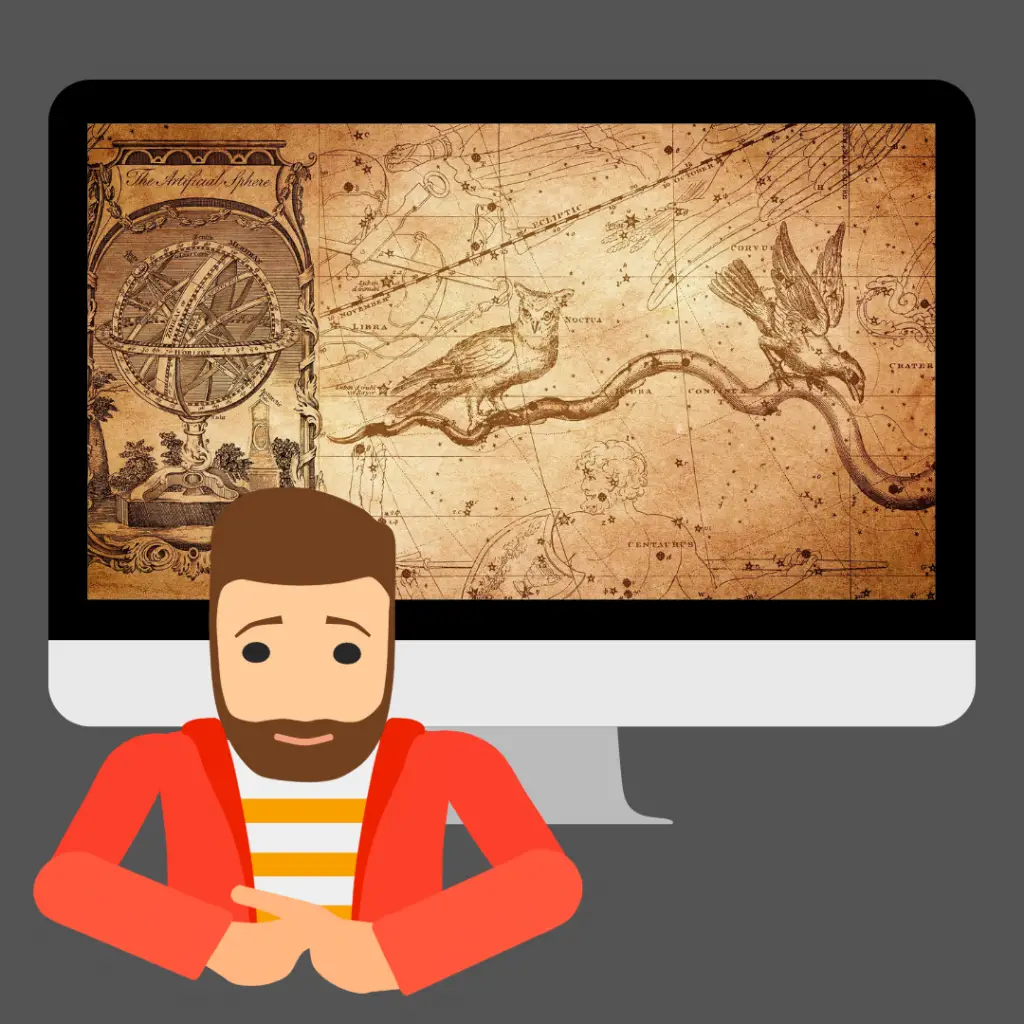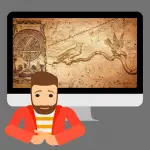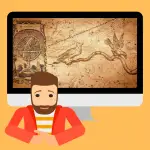In total, there are 88 official constellations. With 42 animal constellations, they amount to almost half of that number. The constellations are broken down into 5 groups. The other groups include; objects, which has 28 constellations – humans, which has 14 constellations – chimaeras, which has 2 constellations – and natural features, which has 2 constellations.
In this article, you will find a list of all 42 of the animal constellations included with the constellation name and the animal that they represent.
Many of the constellations come with legends of their creation.
Therefore, the myths behind 4 different animal constellations can also be found below.
List of Animal Constellations
- Apus (The Bird of Paradise)
- Aquila (The Eagle)
- Aries (The Ram)
- Camelopardus (The Giraffe)
- Cancer (The Crab)
- Canes Venatici (The Hunting Dogs)
- Canis Major (The Big Dog)
- Canis Minor (The Little Dog)
- Capricornus (The Sea-Goat)
- Cetus (The Whale/Sea Monster)
- Chamaeleon (The Chameleon)
- Columbia (The Dove)
- Corvus (The Crow)
- Cygnus (The Swan)
- Delphinus (The Porpoise)
- Dorado (The Swordfish)
- Draco (The Dragon)
- Equuleus (The Little Horse)
- Grus (The Crane)
- Hydra (The Sea Serpent)
- Hydrus (The Water Snake)
- Lacerta (The Lizard)
- Leo (The Lion)
- Leo Minor (The Little Lion)
- Lepus (The Hare)
- Lupus (The Wolf)
- Lynx (The Lynx)
- Monoceros (The Unicorn)
- Musca (The Fly)
- Pavo (The Peacock)
- Pegasus (Pegasus/The Winged Horse)
- Pheonix (The Pheonix)
- Pisces (The Fishes)
- Piscis Austrinus (The Southern Fish)
- Scorpius (The Scorpion)
- Serpens (The Serpent)
- Taurus (The Bull)
- Tucana (The Tucan)
- Ursa Major (The Big Bear)
- Ursa Minor (The Little Bear)
- Volans (The Flying Fish)
- Vulpecula (The Fox)
Hydra – The Sea Serpent
Planets: 18 confirmed, 3 Messier objects
Location: Southern hemisphere/latitudes between +54 degrees and -83 degrees
Constellation: Largest by size of all 88 constellations
Discovery: 2nd century, by Greek astronomer, Ptolemy
The Hydra had a dog-like body and a minimum of 8 snakeheads, one of which was immortal. Her blood was poisonous and her breath could destroy life. She terrorized her district, Lerna.
Hera disliked Heracles and induced his madness which caused him to kill his children, she is also said to have raised Hydra purely to be a menace for Heracles.
But with the help of Athena, Hercules sought out the Hydra’s den and forced her into the open with burning arrows.
He held his breath, wrestled the Hydra, and attempted to cut off her many heads – but they kept growing back.
Then, Heracles’s chariot driver, Lolus, started a fire.
There was a constant supply of burning branches to scorch the roots of the beheaded snakes and prevent them from re-growing.
He then took the immortal head and buried it.
Pavo – The Peacock
Planets: 5 confirmed, no Messier objects
Location: Southern hemisphere/latitudes between +30 degrees and -90 degrees
Constellation: 44th by size
Discovery: 16th century, by Dutch astronomer, Petrus Plancius
Zeus fell in love with a nymph named Lo, but Hera (his wife) became suspicious.
After he was almost caught, he turned Lo into a cow to hide her.
Despite his attempts, Hera was not convinced.
She sent Argus the giant, who had a hundred eyes, to watch the cow.
Argus tied Lo to an olive tree, so Zeuz ordered Hermes to free the nymph from the giant.
Hermes came to earth disguised as a shepherd, and told Argus story after story until he grew tired.
Once the giant had fallen asleep, Hermes hit him on the head with a stone and killed him.
The peacock was Hera’s sacred bird.
In order to honor Argus, she placed his eyes on her peacock’s tail in the sky.
Scorpius – The Scorpion
Planets: 14 confirmed, 4 Messier objects
Location: Southern hemisphere / latitudes +40 degrees to -90 degrees
Constellation: 33rd by size
Discovery: 2nd century, by Greek astronomer, Ptolemy
A poor shepherd, Hyrieus, was visited by Zeus, Hermes, and Poseidon.
Although he was unaware that they were Gods, he sacrificed his only animal to feed them, an ox.
The Gods were thankful for his generosity, and granted him a wish. Hyrieus asked them for a son.
The Gods told him to bury the carcass of the ox, and in 9 months’ time, as requested, a boy would be born.
This boy was Orion.
He grew up to be such a great hunter that he was hired by King Oenopion to kill the beasts that inhabited their island, Chios.
The mother of all animals, Gaia, was furious.
She sent a giant scorpion after him.
His strength nor his sword was any match for the beast, and the scorpion stung him to death.
Gaia placed the scorpion in the sky as a reward, which can be seen constantly chasing Orion’s constellation.
Ursa Major – The Big Bear
Planets: 13 confirmed, 3 Messier objects
Location: Northern hemisphere/latitudes between +90 degrees and -30 degrees
Constellation: 3rd largest by size of all 88 constellations
Discovery: 1869, by an English astronomer, Richard A.Proctor
Hera, Zeus’s wife, was jealous that he had taken smitten for a young nymph called Calisto.
To prevent this, Hera turned her into a bear.
In Calisto’s bear form, she encountered her son Arcas.
She raised her arms hoping to embrace him with a hug.
However, Arcas saw this as a threat and feared the bear intended to attack.
Arcas was inclined to shoot the bear, but Zeus intervened to prevent her death.
He too turned the son into a bear, then, picked both up by their tails and threw them into the safety of the sky.
Now, the set of bears can always be seen together.
With the constellation Ursa Major as Calisto, and Ursa Minor as Arcas, her son.
The North Star marks the tip of Ursa Minor’s tail.
Conclusion
The stars have been fascinating people for decades.
Our ancestors knew the sky like the back of their hands, observing patterns in stars and utilizing them as navigation tools.
Today, the fabric of their beliefs and culture is still embedded into them.
With the advancement of technology, locating constellations has become increasingly easy to do.
However, not many people actually have any knowledge of their intricate backstories.
As you search for constellations, it can be incredibly satisfying to know the history.
You might also like:
- What Are Constellations Used For?
- A Guide To Greek Constellations
- A Guide To Navigation Constellations
- Constellations For Love (A List)
- Constellations For Friendship (A List)
- Animal Constellations (a Guide)
- Autumn Constellations
- Spring Constellations
- Winter Constellations
- Summer Constellations







